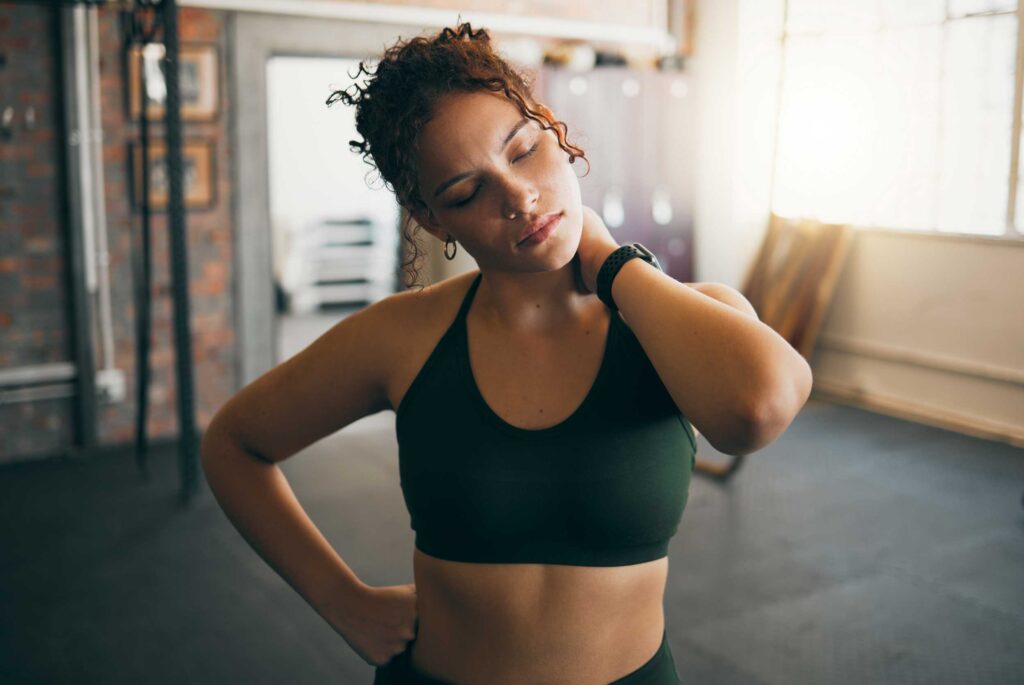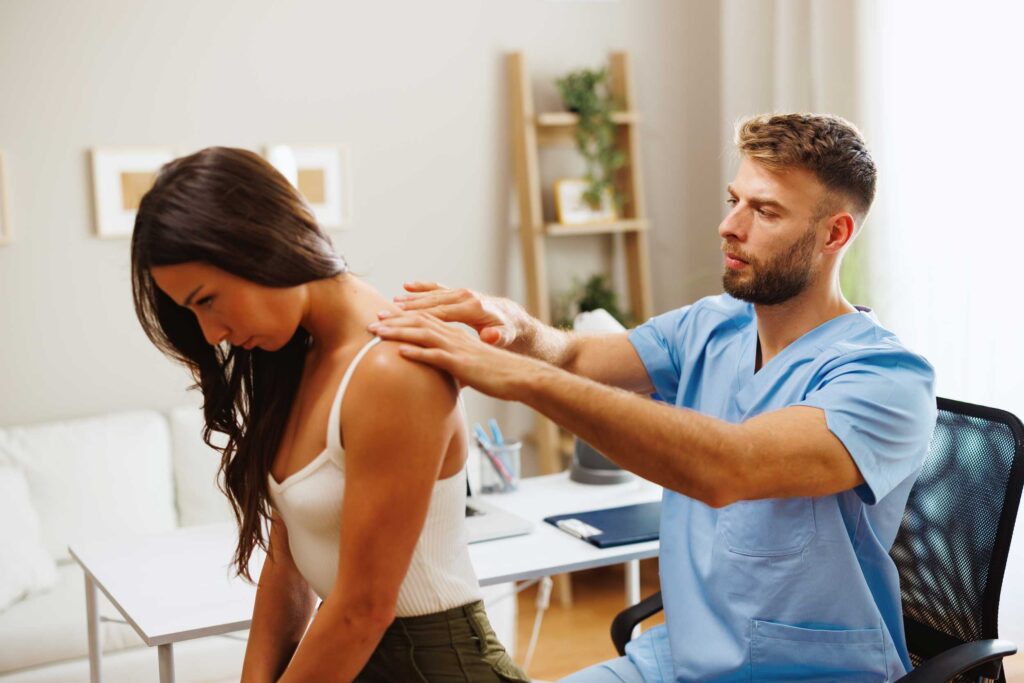Bra strap syndrome is not simply having strap markings on your skin after a long day of wearing your bra. For some women it manifests as pain on the shoulders, neck, back, and even fatigue on the arms. So what exactly is bra strap syndrome?
Discovered First in Men
The first medically documented cases of this syndrome was in soldiers carrying heavy backpacks who reported symptoms of pain and numbness in the arms, a general feeling of fatigue in this area, when asked to stand at attention. So why is “bra strap syndrome” first recorded among men? Well, the more scientific term for this costoclavicular syndrome. This is a symptom complex that is brought about by pressure placed on the clavicle or collarbone. Underneath this collarbone is a bunch of nerves and vessels that can get pinched and thus causes the pain and numbness on the body parts that connect to these nerves and vessels.

Let’s Talk About Size
When you have a custom bra fitting that gets you just the right size of bra, it’s not very often that you will experience the costoclavicular syndrome. Sometimes, symptoms like this is actually a rather conspicuous experience one might have that can lead to reconsidering the current size and fitting of the bra. Changes in your body whether in overall weight or breast size changes can lead to this syndrome as the weight of your breasts draw more pressure from the straps on the skin. A properly-fitted bra will not focus all the pressure on one area and will actually distribute the support properly so your bra feels comfortable.
Wider Straps for Weight Distribution
We cannot discount the fact that bras in the old days (before the 1900s) were more conservative and spread out support more evenly. Modern day bras tend to have very thin straps with less skin coverage. Although not proven, that could explain why bra strap syndrome was not more commonly reported until the 1980s.
If you already have the right fit of bra and still feel the straps digging in, there are some solutions you can consider depending on how it fits your own preferences:
- Shoulder pads – Some might not prefer this if it sticks out conspicuously with the top you are wearing. Easy to hide this if you have a nice loose blouse or layers on top. If you’re concerned about how this looks on a more form-fitting top then you might want to consider the next solution.
- Wider Straps – This means all that downward force is distributed on a larger surface area instead of just one thin section of your skin. This kind of feature allows for comfortable movement and you will find this often in sports bras. Thankfully you can also find this in bras for daily wear too. If you have larger breasts than average, you will find wider straps to be very comfortable.
- Strapless bras – This completely removes the need for straps but that means all the support is happening at the bands. Make sure you choose strapless bras that can hold their own with good quality bands. Once those bands become overstretched or loose, you will start to feel the lack of support. Choose garments that do not add weight to your chest and fit more around the waist so that you don’t add more weight than necessary on the strapless bra.
Physical Solutions
If you’re looking for solutions beyond the bra that you are wearing, there are some options AFTER you have made sure you are wearing the right bra size (or at least adjusted it to fit right).
Even after changing bras, this syndrome can manifest during the times of the day where more movement is required from your arms and shoulders. This is because more time is needed to loosen up the space squeezed between your collarbone and your first rib. You can apply a moist heat compress on the areas of pain or numbness to improve circulation. If you are physically able, gently raise your arm as if you are swinging it from the side until you have it stretched up. Do this a few times and make sure you are not experiencing pain while doing so. Repeat on the other side. Our goal is to lessen the pressure and improve circulation.
You will also want to lessen the load in general for your upper body. That means avoid carrying heavy handbags, shopping bags or anything that creates more downward pressure for your arms and shoulder. Taking a break will definitely help in your recovery.
Consult Your Doctor If Pain Persists
If the pain still does not go away and actually becomes unbearable, it is best to go see your doctor. More intense manifestations of the syndrome will require corticosteroids or anesthetics.
Bra strap syndrome is NOT a disease but a complex of symptoms. You want to treat these symptoms through preventive measures so that it does not worsen into more serious forms of pain or even paralysis in some nerves.
